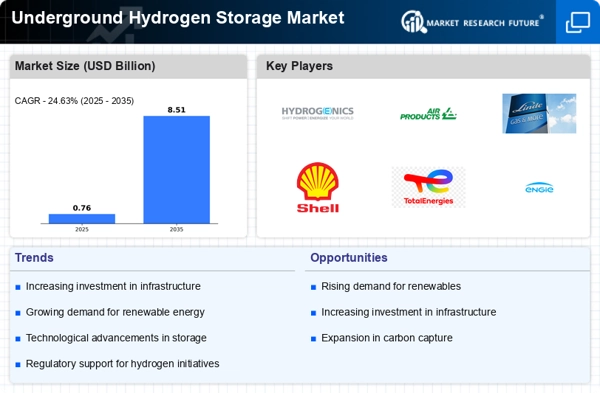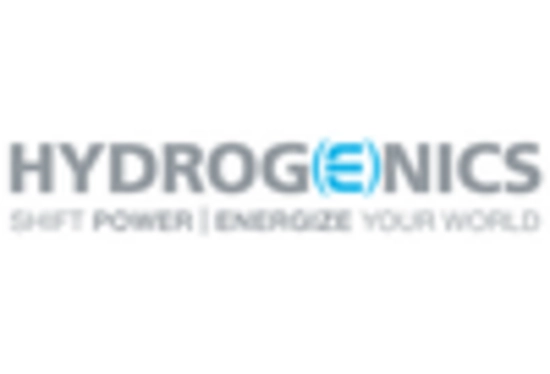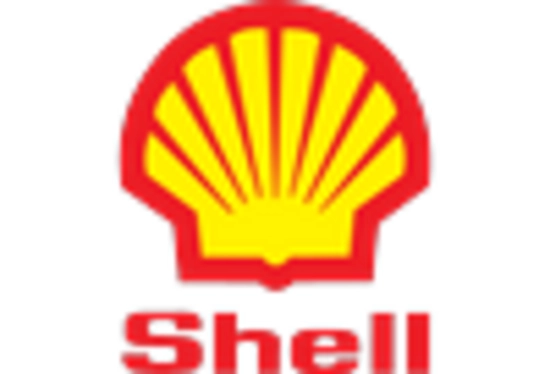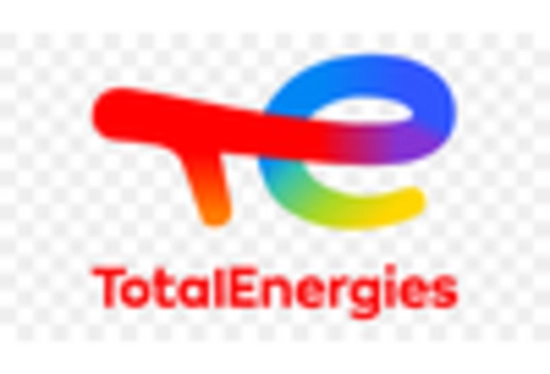Regulatory Support and Policy Frameworks
The Underground Hydrogen Storage Market is benefiting from an increasingly supportive regulatory environment. Governments are recognizing the potential of hydrogen as a clean energy carrier and are implementing policies that promote its storage and utilization. Incentives such as tax breaks, grants, and subsidies for hydrogen storage projects are becoming more common, encouraging investment in this sector. For instance, recent legislation in various regions has allocated significant funding for research and development in hydrogen technologies, which is expected to bolster the market. This regulatory support not only facilitates the establishment of new storage facilities but also enhances public confidence in hydrogen as a viable energy solution, thereby driving market growth.
Strategic Partnerships and Collaborations
The Underground Hydrogen Storage Market is witnessing a rise in strategic partnerships and collaborations among key stakeholders. Energy companies, technology providers, and research institutions are increasingly joining forces to develop innovative storage solutions. These collaborations often lead to shared resources, knowledge exchange, and accelerated development timelines. For example, partnerships between energy firms and academic institutions have resulted in groundbreaking research that enhances the safety and efficiency of underground hydrogen storage. Such alliances not only foster innovation but also help in navigating regulatory landscapes, thereby facilitating market entry and expansion. This trend of collaboration is likely to continue, further propelling the growth of the underground hydrogen storage market.
Technological Advancements in Hydrogen Storage
The Underground Hydrogen Storage Market is experiencing a surge in technological advancements that enhance the efficiency and safety of hydrogen storage solutions. Innovations in materials science, such as the development of advanced composite materials, are improving the integrity of storage facilities. Furthermore, advancements in monitoring and control systems are enabling real-time data collection and analysis, which is crucial for maintaining optimal storage conditions. According to recent studies, the efficiency of hydrogen storage systems has improved by approximately 30% over the past few years, indicating a strong trend towards more effective storage solutions. These technological improvements not only reduce operational costs but also increase the overall reliability of underground hydrogen storage, making it a more attractive option for energy providers.
Growing Demand for Renewable Energy Integration
The Underground Hydrogen Storage Market is poised for growth due to the increasing demand for renewable energy integration. As countries strive to meet ambitious climate targets, the need for effective energy storage solutions becomes paramount. Hydrogen storage offers a unique advantage by allowing excess renewable energy, particularly from wind and solar sources, to be stored and utilized when demand peaks. Recent estimates suggest that the market for hydrogen storage could reach USD 10 billion by 2030, driven by this demand for renewable energy solutions. This trend indicates a shift towards more sustainable energy systems, where underground hydrogen storage plays a critical role in balancing supply and demand.
Increasing Investment in Hydrogen Infrastructure
The Underground Hydrogen Storage Market is experiencing a notable increase in investment aimed at developing hydrogen infrastructure. As the global energy landscape shifts towards cleaner alternatives, stakeholders are recognizing the importance of robust hydrogen storage capabilities. Recent reports indicate that investments in hydrogen infrastructure have surged, with billions allocated to projects focused on storage, transportation, and distribution. This influx of capital is essential for building the necessary facilities to support the growing hydrogen economy. Moreover, as more investors enter the market, competition is likely to drive innovation and reduce costs, making underground hydrogen storage a more viable option for energy providers. This trend underscores the critical role of investment in shaping the future of the underground hydrogen storage market.


















Leave a Comment